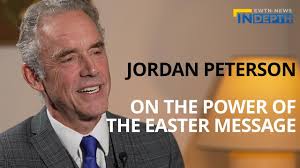So, was the passage of the healthcare “reform” in the House on Sunday a great victory for President Obama and the Democrats? Or will it further stir up waters already roiling from backroom deals, raw disregard of public opinion, and naked lying about a massive expansion of abortion funding by many means, direct and indirect? Only time will tell as the issues begin to sort themselves out over the coming months. But in the meantime, we have some solid data about where Catholics stand on this and a bunch of other issues, and since Catholics are often the swing vote in key elections, their attitudes may prove to be more important in the medium-term than the anger and finger-pointing this week.
In the 2008 presidential election, many Catholics who were angry over the dismal condition of the American economy either stayed home or voted for Barack Obama. As a result, Senator John McCain received only 52 percent of the vote of church-attending Catholics versus 61 percent for President George Bush four years earlier. Voter dissatisfaction spilled over to other tightly contested races as well. Democrats picked up numerous traditional GOP congressional seats in rust-belt states where large numbers of Catholics live.
President Obama and the Democratic Congress misread their victory, however, thinking that the widespread favorable result was an ideological mandate. It wasn’t. A recent poll conducted by John McLaughlin and Associates for the National Review Institute indicates that radical-leftist spending and social programs implemented or promoted by the Democrats do not sit well with the American electorate, including Catholics.
Here’s a sampling of what the polling data reveals about church-attending Catholics (CC) and generic Catholics (GC):
- Political-party afffiliation: CC – 43 percent GOP, 36 percent Dem., 21 percent undecided; GC – 38 percent GOP, 38 percent Dem., 24 percent undecided.
- In the 2008 presidential election did you vote for McCain or Obama? CC – 47 percent McCain, 42 percent Obama; GC – 44 percent McCain, 47 percent Obama.
- President Obama’s job approval: CC – 46 percent approve, 56 percent disapprove; GC – 50 percent approve, 45 percent disapprove.
- Should the federal government support traditional values or support tolerance of all lifestyles? CC – 57 percent traditional, 36 percent tolerance; GC – 53 percent traditional, 40 percent tolerance.
- Will the healthcare legislation under consideration in Congress make health care better or worse for most Americans? CC – 27 percent better, 62 percent worse; GC – 30 percent better, 57 percent worse.
- Will the healthcare legislation under construction in Congress make health care better or worse for you and your family? CC – 24 percent better, 60 percent worse; GC – 25 percent better, 54 percent worse.
- Will the healthcare legislation under consideration in Congress increase or decrease healthcare costs for most Americans? CC – 68 percent increase, 23 percent decrease; GC – 66 percent increase, 23 percent decrease.
- Will the healthcare legislation under consideration in Congress increase or decrease health care costs for you or your family? CC – 65 percent increase, 21 percent decrease; GC – 62 percent increase, 24 percent decrease.
- Are you concerned that the health care plan under consideration in Congress will significantly increase the size of the federal deficit? CC – 88 percent concerned, 11 percent not concerned; GC – 85 percent concerned, 14 percent not concerned.
- Democrats in D.C. spend too much time pursuing their ideology: CC – 71percent agree, 20 percent disagree; GC – 69 percent agree, 24 percent disagree.
- In recent years has Congress lost sight of the constitutional limits of its powers? CC – 78 percent agree, 15 percent disagree; GC – 77 percent agree, 17 percent disagree.
- What is the biggest threat to the country’s future: big business, big labor, big government? CC – 61 percent government, 26 percent business, 7 percent labor; GC – 60 percent government, 26 percent business, 6 percent labor.
- Which is likely to improve U.S. economy – individual initiative or government spending and intervention? CC – 69 percent individuals, 23 percent government; GC – 66 percent individuals, 26 percent government.
- Tea Party protesters – are they driven by anger or concern over U.S. economy’s future? CC – 21 percent anger, 59 percent concern; GC – 18 percent anger, 58 percent concern.
- Support for Tea Party protests: CC – 58 percent sympathize, 25 percent do not; GC – 52 percent sympathize, 29 percent do not.
- If the Tea Party fielded candidates for the U.S. Congress, for whom would you vote? CC – 28 percent GOP, 28 percent Dem., 8 percent Tea Party, 36 percent undecided; GC – 23 percent GOP, 31 percent Dem., 7 percent Tea Party, 38 percent undecided.
What’s most interesting about the polling data is that – give or take a couple of points either way – the views of church-attending Catholics and generic Catholics reflect the nation at large. Since a majority of Catholics are now center-right, this could spell trouble for Obama and the Democratic Party this fall. In the key swing states – Ohio, Pennsylvania, Indiana and Florida – where the votes of practicing Catholics still matter, they could decide the outcome of closely contested races.
Despite the seeming success for the Democrats in the healthcare vote, the big-government agenda could be derailed this November if control of the House of Representatives switches to the GOP. If pro-life, fiscally conservative Republicans regain the congressional seats lost in 2006 and 2008, it will be thanks to the turnout of Catholic voters.















